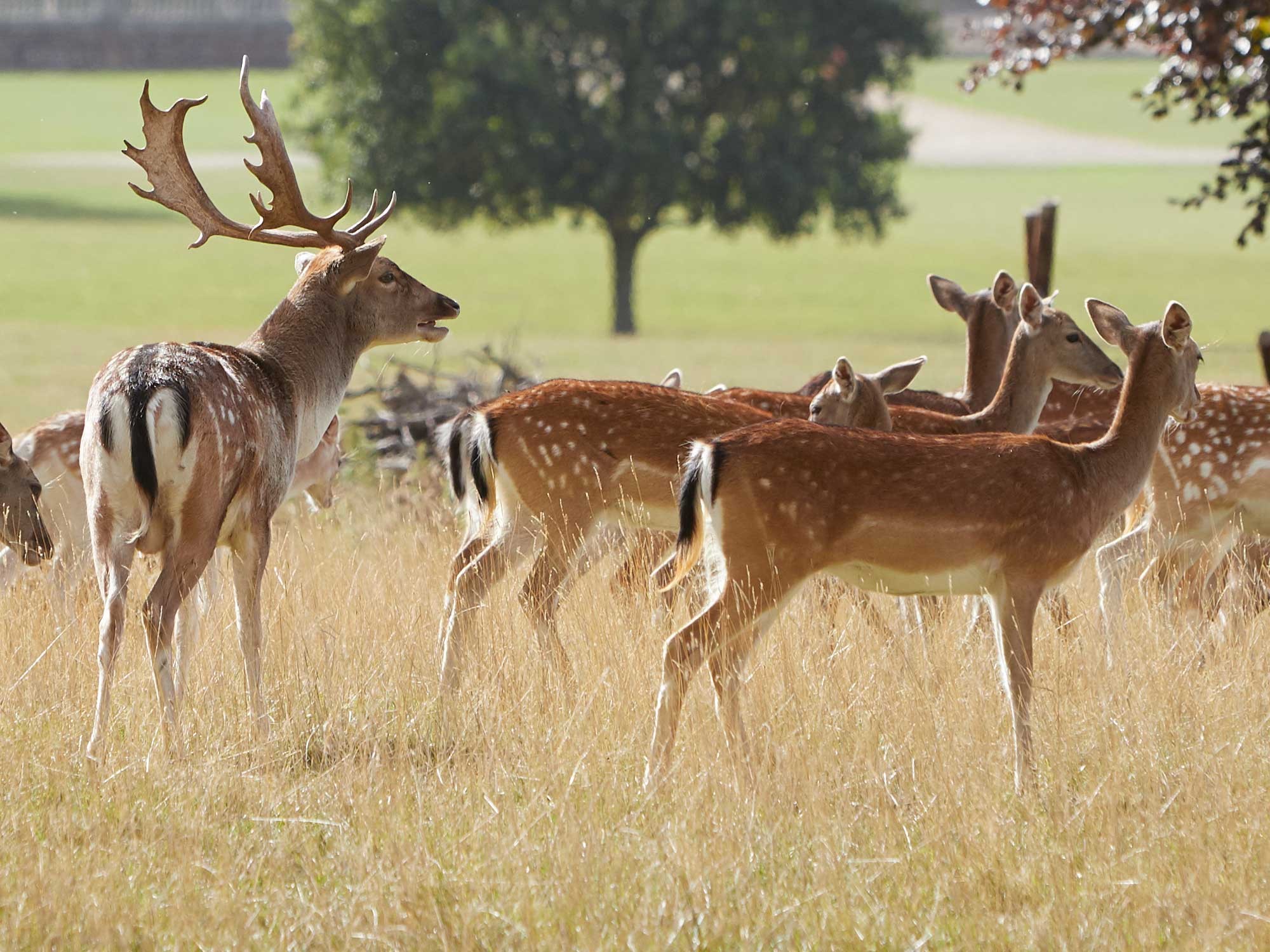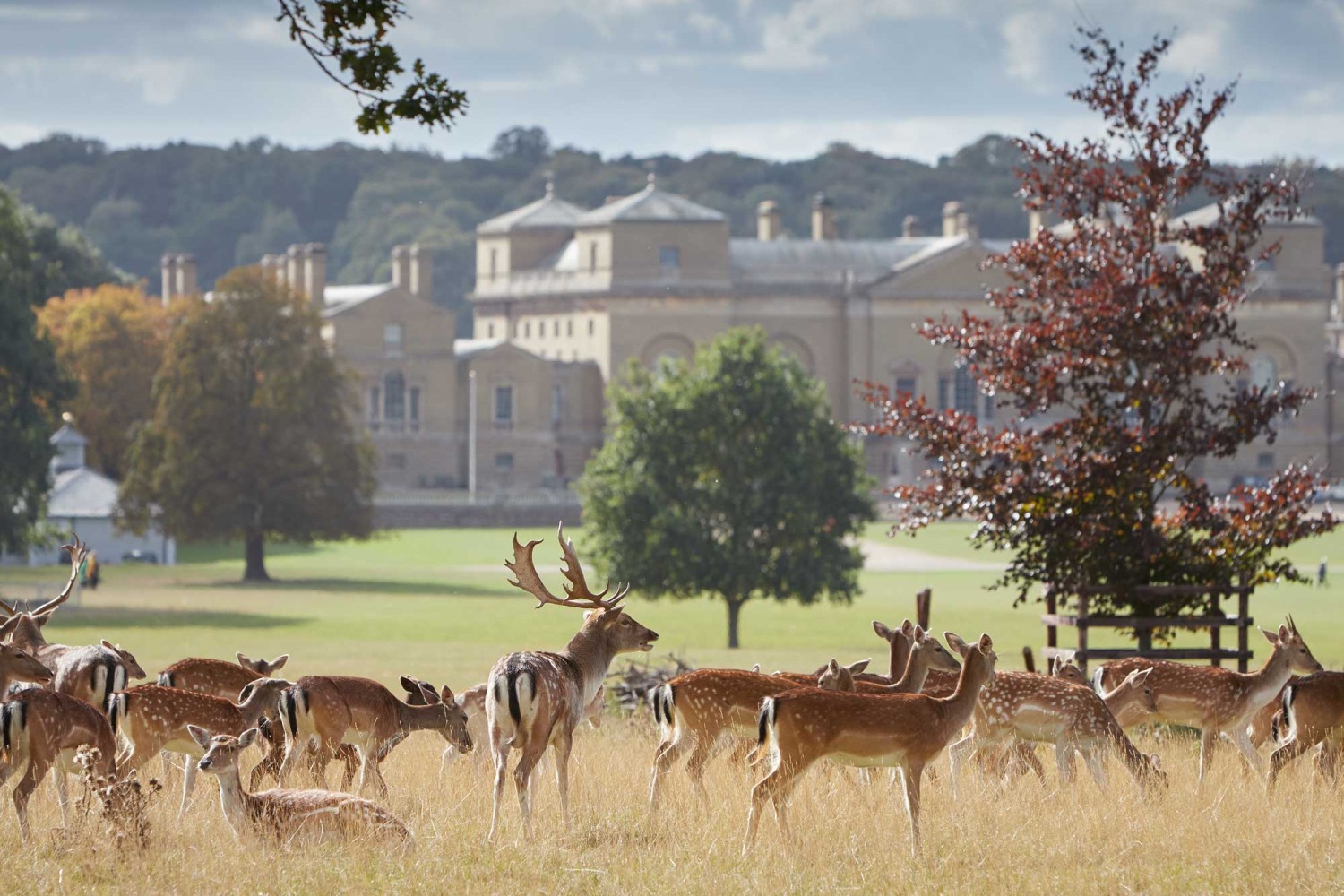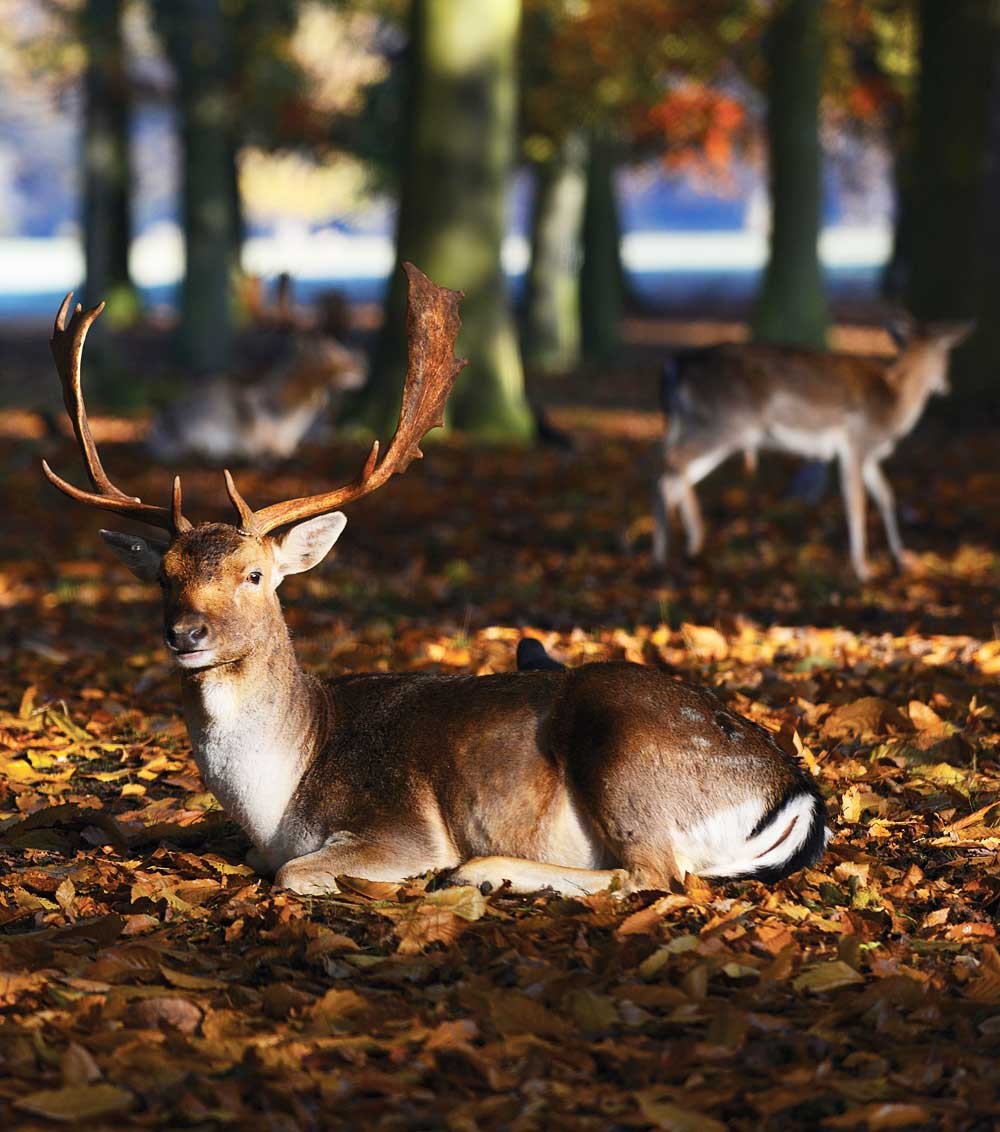
The beauty of the Holkham estate’s fallow deer
Although the Palladian grandeur of Holkham Hall is of national importance, the beautiful herd of deer that’s roamed the estate’s picturesque parkland for 150 years is an attraction in its own right
Holkham Estate is a wonderful place to spot plenty of our native wildlife like ducks, geese, birds of prey, and deer. Five of the six species of deer that live in Britain can be found on the estate: red, fallow, muntjac, roe and Chinese water deer. And while some may be elusive, you’re very likely to spot fallow deer on a visit to the estate, as a large herd make their home in Holkham’s 677-acre deer park.
The fallow deer roam freely around the park, around the hall, the lake and woodland, among the evergreen oaks brought to Holkham from Italy. Fallow deer were originally brought to Holkham in 1844 by the second earl. Until that time venison was brought from North Elmham where the Cokes, the owners of Holkham, had another estate.
Venison was a popular food in the Victorian era and fallow deer were judged to be ideal park deer as they are attractive, small in size, easy to look after, and each deer produces a good amount of meat. In fact, the famous French chef Escoffier thought that the fallow deer from an English park ‘has no equal as far as delicacy and tenderness are concerned’.
Fallow deer were introduced to this country by the Norman invaders in the 11th century. Fully-grown male fallow deer are known as bucks, the females as does, and the young as fawns. Bucks grow on average to be 90-95cm high at the shoulder: much smaller than red deer which makes them more manageable for a deer park.

Fallow deer are herbivores, and eat grass, cereals, herbs, fruits, nuts and berries. They digest their food by rumination – they quickly eat then go into cover to chew cud. They have finely developed senses of hearing and scent but see only in black and white. They don’t sleep properly: they just doze with eyes half-closed.
The rutting period for fallow deer is late October to November and following a gestation period of 234 days a doe gives birth to one fawn, in mid-June. Fawns have a diet of milk and grass: the mother feeds herself after hiding her new-born in long grass.
The male deer’s rutting behaviour takes place in the autumn, primarily at dawn or dusk. They mark themselves with their scent by mixing mud and urine with their hooves and wallowing in it. They also bellow, and scrape their feet with their head held high as a display of strength. Sometimes you will see the deer with foliage in their antlers; this is done to try and increase the perception of the antlers’ size. Actually clashing antlers is a last resort due to the potential of getting hurt. Their antlers are solid bone and are shed each year after the rutting season.
If you do visit to take a look at these beautiful creatures, remember that they are wild animals, and keep at least 50m away. This is for their benefit, but getting in between rutting stags or a doe and her fawn can be dangerous for you too!
Photography courtesy of the Holkham Estate

